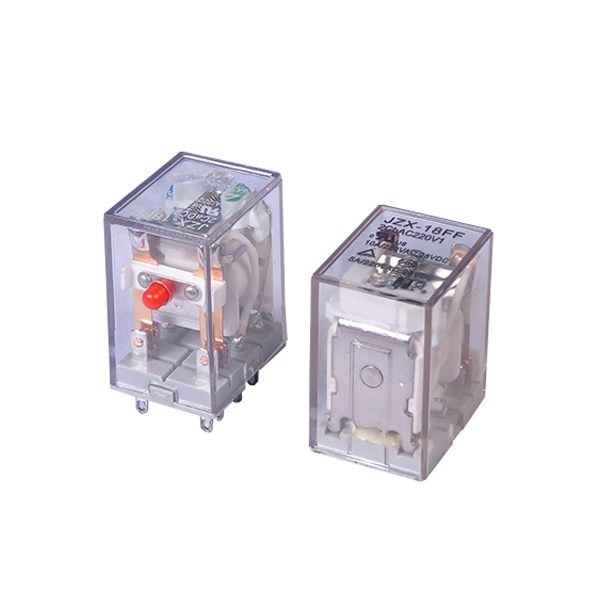Understanding and Addressing Failure Modes in General Purpose Relays for Heavy Power Switching
2024-04-09
Introduction:
General Purpose Relays for Heavy Power Switching are essential components in electrical systems, providing reliable control over high-power loads. However, like any electromechanical device, relays are susceptible to failure under certain conditions. Understanding the common failure modes associated with these relays and implementing preventive measures are crucial for maintaining system reliability. In this blog, we'll explore typical failure modes of General Purpose Relays for Heavy Power Switching and strategies for prevention and mitigation.
1. Contact Wear and Degradation:
One of the most common failure modes in relays is contact wear and degradation over time, especially when switching high-power loads. Continuous arcing during switching operations can lead to pitting, erosion, and eventual failure of the relay contacts.
Prevention/Mitigation:
- Select relays with high-quality contact materials, such as silver or silver-nickel alloys, known for their durability and resistance to arcing and wear.
- Ensure proper contact pressure and alignment to minimize resistance and heat generation during switching.
- Implement regular maintenance and inspection schedules to detect early signs of contact wear and replace worn-out relays promptly.
2. Coil Burnout:
Coil burnout occurs when the electromagnetic coil of the relay is subjected to excessive current or voltage, leading to overheating and insulation breakdown. This can result from overloading, short circuits, or voltage spikes.
Prevention/Mitigation:
- Properly size the relay coil to match the voltage and current requirements of the application, avoiding overloading or exceeding the coil's rated capacity.
- Incorporate overcurrent protection devices such as fuses or circuit breakers to prevent excessive current flow to the relay coil.
- Implement transient voltage suppression techniques to mitigate voltage spikes and protect the coil from damage.
3. Mechanical Failure:
Mechanical failure in relays can occur due to factors such as mechanical stress, vibration, or foreign object interference. This can result in misalignment, binding, or jamming of relay components, leading to malfunction or complete failure.
Prevention/Mitigation:
- Ensure proper mounting and secure fastening of relays to minimize mechanical stress and vibration.
- Select relays with robust construction and adequate mechanical tolerance to withstand harsh operating conditions.
- Implement regular inspection and maintenance procedures to detect and address mechanical issues early, such as cleaning, lubrication, and adjustment of moving parts.
4. Insulation Breakdown:
Insulation breakdown can occur when the insulation materials used in the relay are compromised, leading to short circuits or electrical arcing between conductive parts. This can result from environmental factors, moisture ingress, or contamination.
Prevention/Mitigation:
- Choose relays with adequate insulation materials and sealing techniques to protect against environmental hazards such as moisture, dust, and contaminants.
- Implement proper installation practices to prevent damage to insulation materials during assembly or wiring.
- Conduct routine insulation resistance testing to identify potential insulation degradation and take corrective actions as needed.
5. Environmental Degradation:
Environmental factors such as temperature extremes, humidity, dust, and corrosive atmospheres can accelerate the degradation of relay components, leading to premature failure.
Prevention/Mitigation:
- Select relays with environmental ratings suitable for the intended application environment, such as temperature range, humidity resistance, and corrosion protection.
- Implement proper enclosure and sealing methods to shield relays from environmental hazards and contaminants.
- Conduct regular inspection and maintenance to monitor the condition of relay components and replace any degraded or damaged parts.
Conclusion:
In conclusion, understanding the typical failure modes associated with General Purpose Relays for Heavy Power Switching is essential for maintaining system reliability. By implementing preventive measures such as selecting high-quality relays, proper sizing and protection, regular maintenance, and environmental protection, engineers and technicians can mitigate the risk of relay failure and ensure the continued operation of critical electrical systems.



